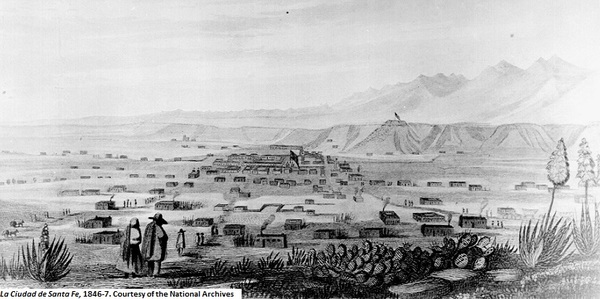Dublin Core
Title
Description
Persistent tales about a lost Spanish colony piqued the interest of Jose Rafael Serracino. Like many explorers before him, he was inspired to put together a search party and leave Santa Fe to explore the West.
In 1811, more than three decades after Franciscan friars Escalante and Dominguez made their way into present-day Utah Valley, another lesser known expedition left New Mexico in search of a rumored Spanish outpost in Ute territory. According to nineteenth-century New Mexican chronicler Pedro Bautista Pino, persistent tales about a lost Spanish colony far beyond the pale of settled territory piqued the interest of New Mexico’s postmaster, Jose Rafael Serracino, and inspired him to put together a search party.
The details we have of Serracino’s expedition are sketchy. After leaving New Mexico, the party traveled north across Ute territory for three long months, finally coming to a halt on the banks of what Pino described only as “a large river.” Among the Native Americans living in the area, Serracino found Spanish-made tools including knives, razors and awls. At least one historian has speculated that the river in question was none other than the Snake, and that the tools came from Spanish trading parties operating in the Pacific Northwest. This theory assumes that Serracino and his party hiked past the Great Salt Lake and the Bear River on their way to the Snake River drainage.
It is possible that the river Serracino encountered was simply the Colorado, though it’s hard to believe that the expedition could not have made it further north in three months. Regardless of where Serracino and his compatriots ended up, however, the story of the expedition highlights once again how Spanish-speaking explorers had gained substantial knowledge of the Great Basin and Colorado Plateau years before other Europeans came to the region
Creator
Source
Image: La Ciudad de Santa Fe, c. 1846-7. Engraving from "Report of Lt. J. W. Abert of his Examination of New Mexico in the Years 1846-1847. Image shows Santa Fe in the 1840s with the center of town in the distance, near the base of the Sangre de Cristo foothills. Courtesy of the National Archives.
_______________
See Don Pedro Bautista Pino, Exposición sucinta y sencilla de la Provincia del Nuevo Mexico… (Cadiz, 1812), in H. Bailey Carroll and J. Villasana Haggard, trans., Three New Mexico Chronicles: The Exposición of Don Pedro Bautista Pino 1812; the Ojeada of Lic. Antonio Barreiro 1832; and the additions by Don José Augustín de Escudero, 1849 (Albuquerque: The Quivira Society, 1942), 134; and William H. Goetzmann, Exploration and Empire: The Explorer and the Scientist in the Winning of the American West (New York: History Book Club Edition, 1966), 69-70

